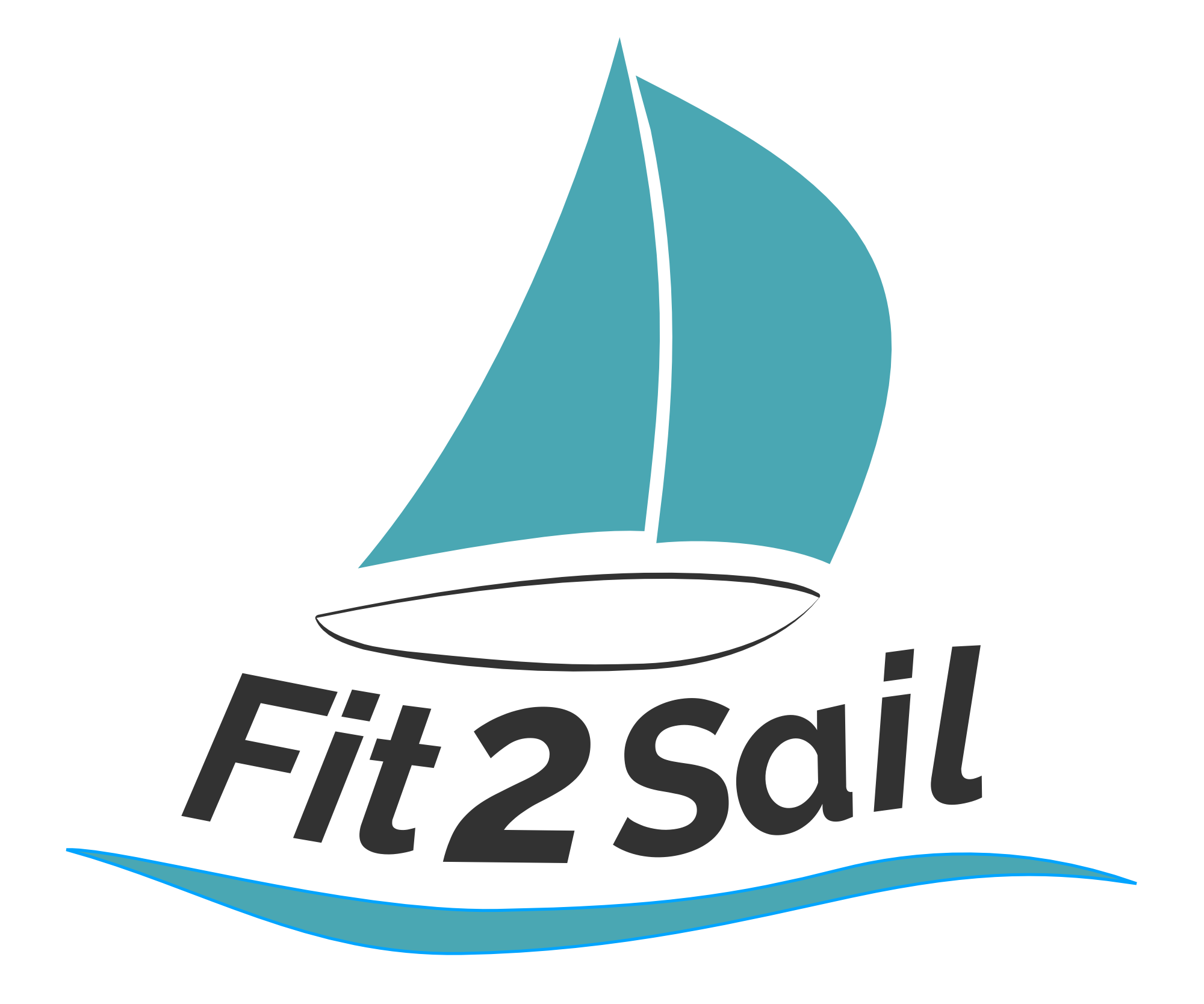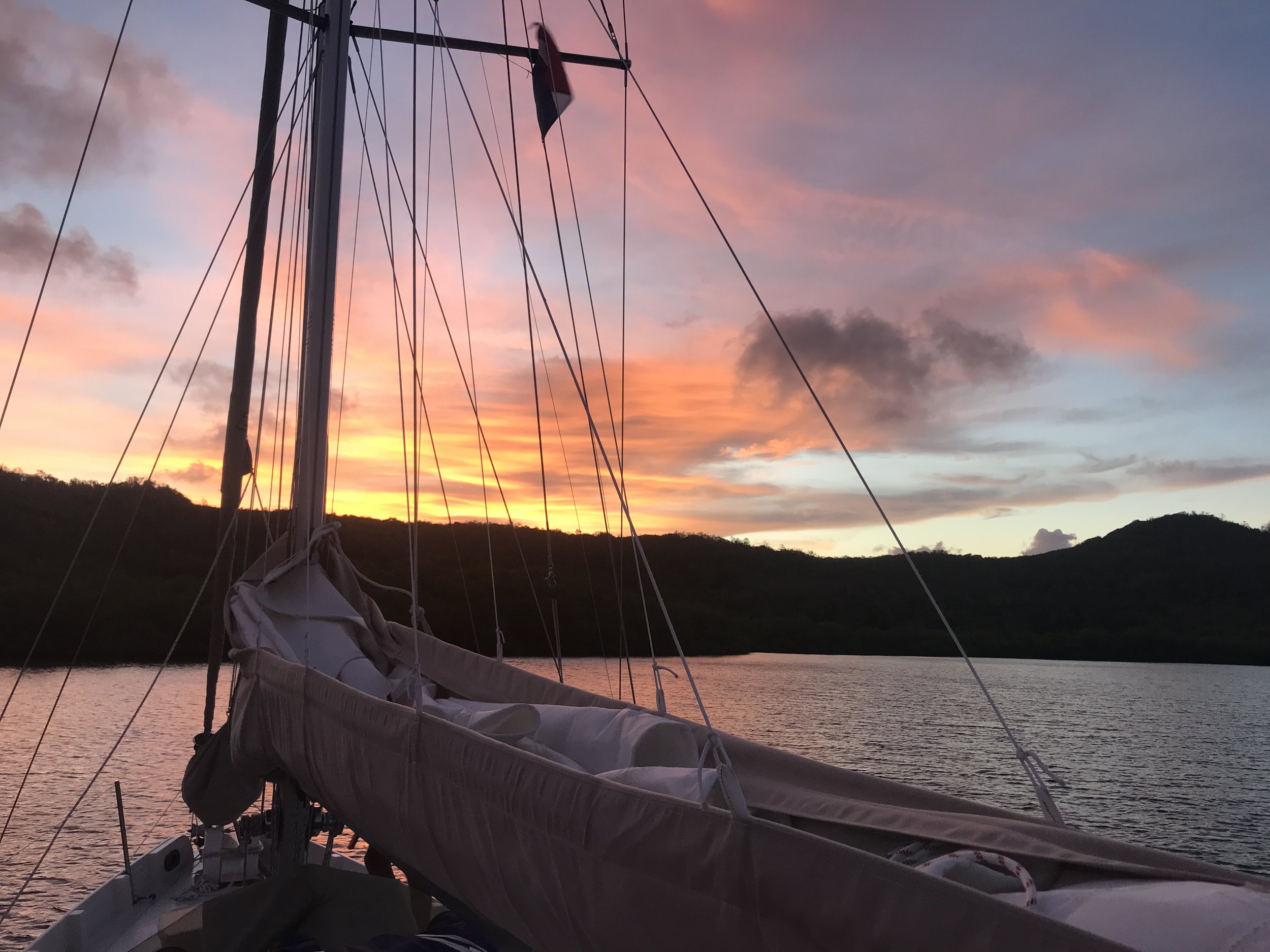Essential Information for the International Cruiser
There’s some stuff you need to know to cruise successfully, whatever the destination. Things like where the grocery store is, or where to buy fuel/water/propane. Is there a dinghy dock? A laundromat? (Whether an anchorage is deep enough for your boat, or whether there’s a massive obstruction in the way of even getting there in the first place, is also key - but I consider that to be basic boater information. Cruising is about living on your boat as you move around, and food, water, and clean laundry rank high up there on my list of things I need to live happily.)
Did someone say laundromat?
The Eastern Caribbean, as an example, is a mixture of countries and colonial backgrounds, currencies and languages. One island might be close enough to another that you can hear VHF traffic from the next island over when watching for the green flash at sunset. We’ve had days where we could have, if we’d wanted to, be in a different country for breakfast, lunch, and dinner., not repeating an island. It’s hard to believe you need to clear customs each place you go.
But you do. So how, exactly, do you accomplish this? It’s not like flying into an airport and shuffling along in line with other travelers!
When you leave your home country to explore other lands by personal boat, there are a few really critical bits of knowledge that will make the difference between a successful cruise (here defined as “I went and came back and look fondly back on the experience”) and a, umm, less successful one.
Do I need a visa? This answer will vary wildly depending on the passport you hold and the country you wish to visit. For Americans (since this is my perspective, it’s what I know), most countries will issue a tourist visa on arrival. If you’re going to French Polynesia, though, not so much. Do your research ahead of time and know for certain - because some visas take a lot of time and money to procure. (See French Polynesia as one example.) Don’t be ceremoniously kicked out of a place immediately on arrival because you didn’t do your homework.
What is the currency in play? And, do they take credit cards for things like immigration and customs? Or do they cheerfully (or at least not with usurious exchange rates) accept the currency of the country you’re coming from at the customs office? What about in shops around town?
What’s the language? It’s all well and good to assume you’ll find English speakers (again, American perspective) but this might not be the case. A little forewarning (and some time with Babbel or Duolingo or Google) is a smart traveler’s tool.
Where can I check in and check out? When you’re moving around on your own boat, you might look at a chart and think that the entire vast coastline is at your pleasure and whim. Not so fast - before you can blithely explore the new country that’s caught your eye, you need to officially enter the country (called clearing in - see “customs and immigration” referenced above). When you come in by plane or other commercial carrier, this nuance might not have been something you’ve ever encountered. Again, research is needed. Noonsite can be helpful but Facebook groups are likely your best source for truly current information - make sure you’re paying attention to dates on posts. You might also want to check on things like fees and hours: sometimes the difference between checking in on a Friday at 3 pm and checking in on Saturday at 3 pm can run to the hundreds of dollars. Your budget might thank you to have learned this ahead of time. As a reminder - most countries require that you check OUT; sometimes the new country will ask for those clearance papers, and I’d hate to think what might happen if you tried to go back into a country you’d never cleared out of months before.
Any special clearance requirements? (In the Eastern Caribbean, there are a couple of different electronic clearance apps - and using one where it’s in play is helpful or even required!)
Our tracker shows where we’ve been
As a quick reference, I’ll include these basic pieces of information for the islands in the Eastern Caribbean where we spent time during the first 4 months of 2023. Since we didn’t get any further south, I won’t go into those details! There also will be no visa information, as that is very dependent on the passport you hold.
British Virgin Islands: Currency: US dollar. Language: English. Cleared in/out: Sopers Hole aka West End (other options include Road Town, Spanish Town, Jost Van Dyke.) Credit cards accepted for clearance at Soper’s Hole anyway; immigration fee was $20 cash. Clearance site: SailClear.
Calypso lit up for Christmas in Peter Island, BVI
USVI: Currency: US dollar. Language: English. Clearance app: CBP ROAM (find in the App Store or Google Play)
Saint Martin (French side of the island): Currency: Euro BUT US dollar accepted almost everywhere. Language: French but English is spoken almost everywhere. Clearance is at individual vendors as opposed to a customs and immigration office; a 5 Euro charge seems to be usual. We cleared at Ile Marine, in the canal leading into the French side of Simpson Bay Lagoon. Clearance app: N/A
Saw signs like this on almost every French island we visited.
Sint Maarten (Dutch side): Currency: Netherland Antilles Guilder (aka Florin) BUT US dollar (and Euro, for that matter), accepted almost everywhere: prices even indicated in both NAG and USD. Language: Dutch but English (and French) spoken almost everywhere. Clearance at customs/immigration offices in Simpson Bay and Phillipsburg; cash or credit card worked fine. Clearance app: N/A
St Barths: Currency: Euro. Language: French (some English spoken in some places). Clearance: Port Captain’s office in Gustavia. Note you pay for your stay on departure, as rates are dependent on where you’ve anchored/picked up a mooring. And yes, you do need to clear out of SXM and into StB even if you were on the French side in Saint Martin! Credit card accepted for payment at the port office. Clearance app: N/A
Antigua and Barbuda: Currency: Eastern Caribbean Dollar. Language: English. We cleared in and out at Jolly Harbour. Credit card NOT accepted at clearance office. Clearance site: ESeaClear (note - this is the only country in the Eastern Caribbean that uses this site!)
Fresh market, St Johns, Antigua
Guadeloupe: Currency: Euro. Language: French (some English spoken in some places). Clearance: We cleared in at Deshaies and out in Ile des Saintes. 5 Euro charge each place, cash. Clearance site: N/A
Bakery in Deshaies might have the best pastries we found
Dominica: Currency: Eastern Caribbean Dollar. Languages: English/French/Kreyol. Clearance: We cleared in at Portsmouth, at the port captain’s office. They do an automatic in/out clearance for up to a 2 week stay, which makes departure simple. Credit card accepted at port office. Clearance site: SailClear
Nature in Dominica is the star of the show
Martinique: Currency: Euro. Language: French (some English spoken in some places). Clearance: We cleared in at Saint-Pierre and out in Sainte-Anne. 5 Euro charge each place, cash. Clearance site: N/A
Sunrise from the windward side of Martinique








